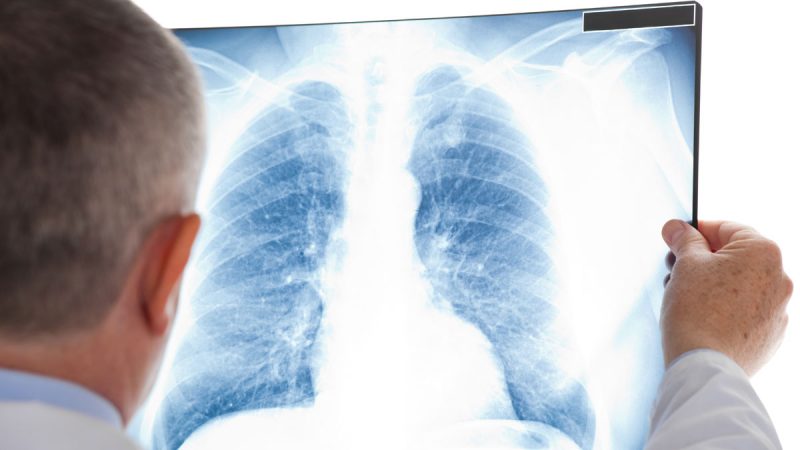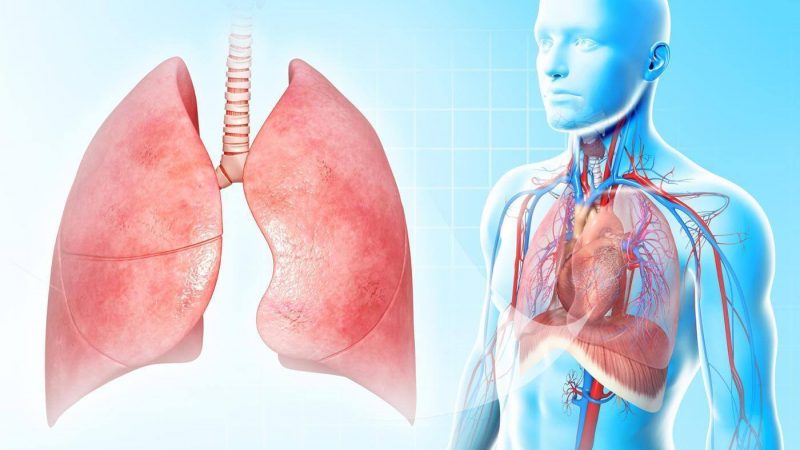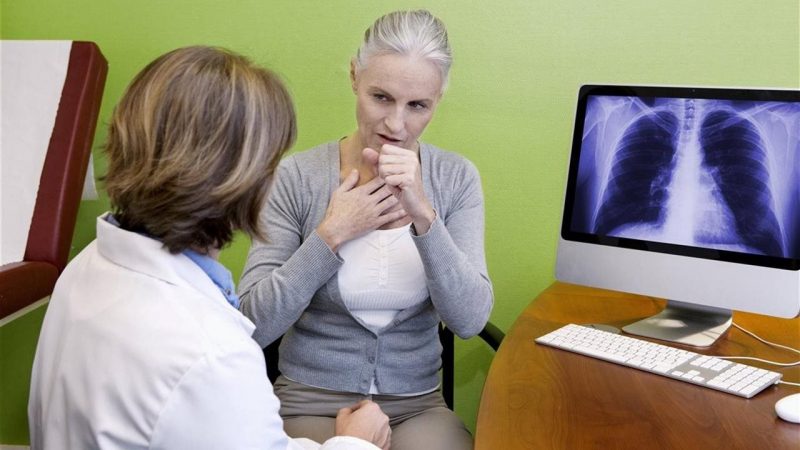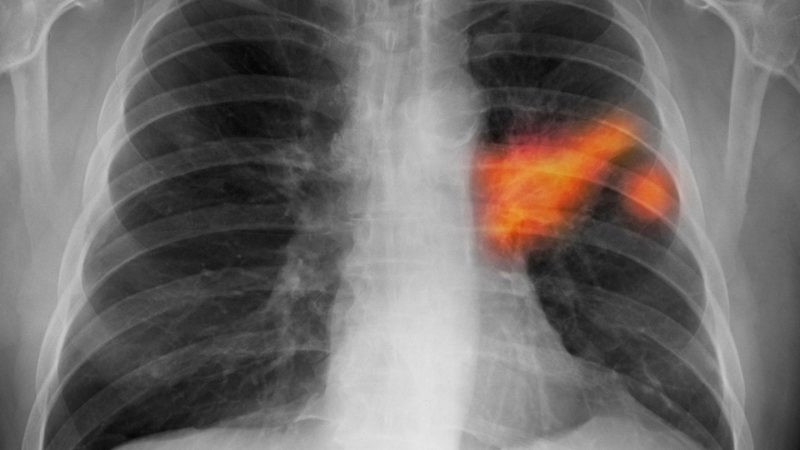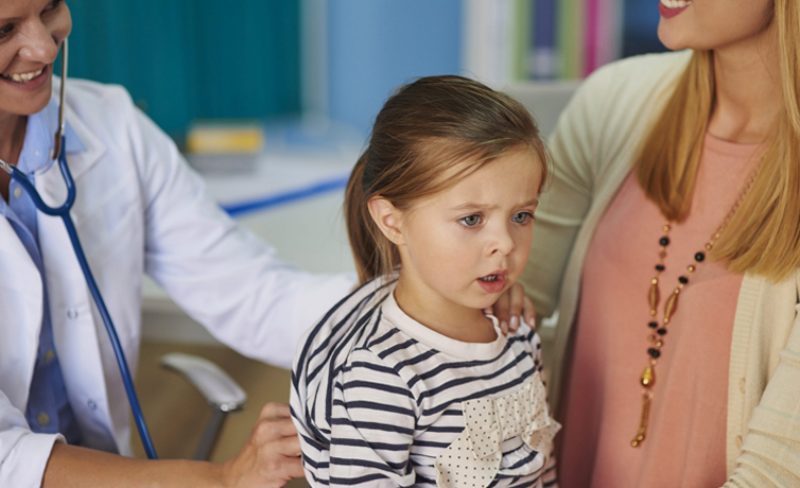Aspiration pneumonia is one of the diseases of the respiratory system, which affects both adults and very young children. The disease develops rapidly, in the absence of treatment quickly passes into a purulent form. To protect yourself from its occurrence, you need to know what factors contribute to its appearance, what are its symptoms and how it can be cured.
Material Content:
- 1 What is aspiration pneumonia?
- 2 Causes and Risk Factors
- 3 Symptoms and signs of the disease in children and adults
- 4 Diagnostic measures
- 5 Treatment of aspiration pneumonia
- 6 Drugs and antibiotics
- 7 Folk remedies
- 8 Is pneumonia contagious to those around you?
- 9 Forecast and possible complications
- 10 Preventive measures
What is aspiration pneumonia?
Aspiration pneumonia is an inflammatory disease of the lower parts of the lungs that occurs when the contents of the stomach, infection from the mouth or nasopharynx get into them.
The disease has symptoms characteristic of almost all types of pneumonia. With timely detection, it lends itself well to treatment, complications can occur with increased inflammation and lack of timely assistance.
Causes and Risk Factors
The main causes of the disease and predisposing factors are:
- tumor processes in the brain that negatively affect the state of the central nervous system;
- heart attacks and strokes, the presence of epileptic seizures;
- trauma to the upper respiratory tract;
- the presence of diseases of the gastrointestinal tract, in which difficulties may arise with ingestion of food;
- chronic diseases of the oral cavity and nasopharynx;
- improper feeding of babies;
- illiterate preparation for surgical interventions and lack of proper care for the operated patients.
All these factors can be the impetus for the occurrence of aspiration pneumonia.
Symptoms and signs of the disease in children and adults
Aspiration pneumonia has characteristic symptoms, in the presence of which urgent consultation of a therapist and pulmonologist is necessary:
- a sharp increase in temperature to high values, fever;
- suffocating cough, difficulties not only with inhalation, but also exhalation of air;
- chest pain, especially during a coughing fit;
- sputum discharge;
- blue skin, this is especially clearly visible around the mouth;
- severe tachycardia and shortness of breath, which occur even at rest.
In addition to the above symptoms, all patients noted a decrease in performance, lethargy and loss of strength.
Children become moody, refuse games and familiar entertainment. Toddlers can cry, constantly worry. If you find the above symptoms of patients, it is urgent to show the doctor.
Diagnostic measures
If there is a suspicion of aspiration pneumonia, the patient will need to undergo the following examinations:
- a general analysis of urine and blood will show the presence of an inflammatory process in the body;
- CT and X-ray will reveal the location and degree of damage to the foci of inflammation;
- sputum bacterium sowing is needed in order to select the most effective antibiotics;
- in some cases, bronchoscopy is indicated for taking the secret, clarifying the diagnosis and treatment methods.
After receiving all the necessary research results, the patient undergoes a treatment regimen.
Treatment of aspiration pneumonia
Aspiration pneumonia requires complex treatment, which is not limited to taking medications.
Depending on the course of the disease and the presence of complications, the following procedures can be prescribed to the patient:
- Physiotherapy. Patients are prescribed massage and breathing exercises. These procedures contribute to the removal of sputum and prevent the occurrence of congestion.
- Oxygen therapy and mechanical ventilation are indicated when patients begin to suffer from respiratory failure.
- Bronchoscopy When an intensive secretion is observed in a patient, its extraction with a bronchoscope may be indicated.
- Drainage. If a significant accumulation of fluid is observed in the pleural region, then the patient is punctured using a special needle between the ribs. Through the system of tubes, exudate exits, the patient's condition improves. The procedure is carried out only in medical facilities under sterile conditions.
- Surgical intervention. It is performed only in severe neglected cases, when the lungs need to be freed from a large number of purulent masses.
The above procedures are performed in cases where drug therapy is not enough.
Drugs and antibiotics
Treatment of pneumonia with antibiotics can last up to two months. It all depends on the condition of the patient and the severity of the lesion.
Medicines are selected strictly individually according to the results of examinations, since they all have a large number of side effects.
In addition to antibiotics, patients are prescribed anti-inflammatory and expectorant drugs that will not allow sputum to accumulate and prevent the development of purulent inflammations.
Folk remedies
It is important to remember that treatment with decoctions and infusions based on medicinal herbs alone will not be able to cure the disease.
In addition, many components of folk remedies themselves are allergens and can trigger a worsening of the patient's condition. If necessary, the doctor himself will prescribe decoctions of such medicinal herbs as chamomile, St. John's wort, sage, calendula, violet.
Do not give the patient alcohol tinctures of herbs or homemade syrups, since the use of certain drugs precludes the use of alcohol-containing products.
In any case, before giving the patient any means of traditional medicine, you need to consult with your doctor.
The duration of treatment of the lower respiratory tract in pneumonia will depend on how soon the patient was in the doctor's office after the first symptoms of aspiration pneumonia occurred, whether the instructions of the specialists are strictly followed and the therapy is correctly prescribed.
Is pneumonia contagious to those around you?
As a rule, aspiration pneumonia does not pose a threat to others, since the inflammatory process occurs as a result of the contents of the stomach entering the lower respiratory tract.
Despite this, if you suspect a disease, you should limit the patient’s contacts with small children, the elderly, pregnant women and patients who have recently suffered from any disease, as a result of which their immunity is weakened.
The patient should have their own dishes, hygiene and bedding. It is important to regularly clean the room where it is located, as well as perform regular ventilation to avoid stagnation of air.
Forecast and possible complications
With timely diagnosis, aspiration pneumonia in children and adults has a favorable prognosis, but the duration of treatment will depend not only on the age of the patient, but also on the individual characteristics of the body, and on existing concomitant diseases.
If the disease is detected late or the wrong treatment is prescribed, then the following complications may develop in patients:
- Malfunctioning respiratory function. Because of this, obstruction of the airways occurs. Less oxygen enters the body, metabolic processes are disrupted, and stagnation occurs in all organs and systems of the body. The patient's state of health sharply worsens; secondary pathologies may join or an exacerbation of existing chronic diseases is possible.
- Exudate accumulates in the lining of the pleura of the lungs, which significantly disrupts the functioning of the organ and provokes the development of empyema - purulent inflammation.
- In severe cases, gangrene of lung tissue occurs when, under the influence of a purulent process, the death of cells of the affected organ begins.
- Abscess of the lung. In the body, the formation of many capsules filled with pus begins. This leads to tissue melting.
The above complications do not lead to instant death of the patient, with timely detection, a successful cure is possible, which in some cases requires a lot of time.
Read also:pulmonary sarcoidosis - what is it
Preventive measures
Since the disease has serious complications, some preventive measures should be followed to reduce the likelihood of its occurrence:
- To avoid the appearance of aspiration pneumonia in newborns, young mothers need to be careful about the process of feeding babies. It is important to monitor the position of the baby’s head and that after eating, food particles do not get into the respiratory tract during regurgitation.
- If an adult or child has a cough, pain occurs in the chest, weakness and intermittent fever develops, you should immediately consult a doctor for an examination.
- It is important to adhere to the rules of preparation for surgical procedures under general anesthesia. A few hours before the procedure, the patient should not eat, so that when the effect of anesthesia decreases, the gastric juice or digested food does not get into the airways and does not provoke pneumonia.
- Routine examinations should be regularly performed at the dentist and ENT specialist to prevent the development of diseases of the oral cavity and nasopharynx.Pathogenic microorganisms can enter the bronchi and lower parts of the lungs, causing an inflammatory process.
- In the presence of pathologies associated with impaired functioning of the nervous system or gastrointestinal tract, you should regularly visit specialized specialists to prevent the exacerbation of the disease or worsening of the patient's condition.
- After the surgery, the head of the hospital bed should be raised to eliminate the risk of gastric juice being thrown through the bronchi into the lungs.
All these measures will help significantly reduce the risk of aspiration pneumonia in adults and children.
Inflammation of the lungs, resulting from the throwing of the contents of the stomach into the respiratory tract, is a fairly common disease. It accounts for up to a quarter of all cases of pathology. To prevent its occurrence and the development of severe consequences, it is necessary to control the existing pathologies and, at the first suspicious symptoms, seek the advice of a therapist and pulmonologist.


